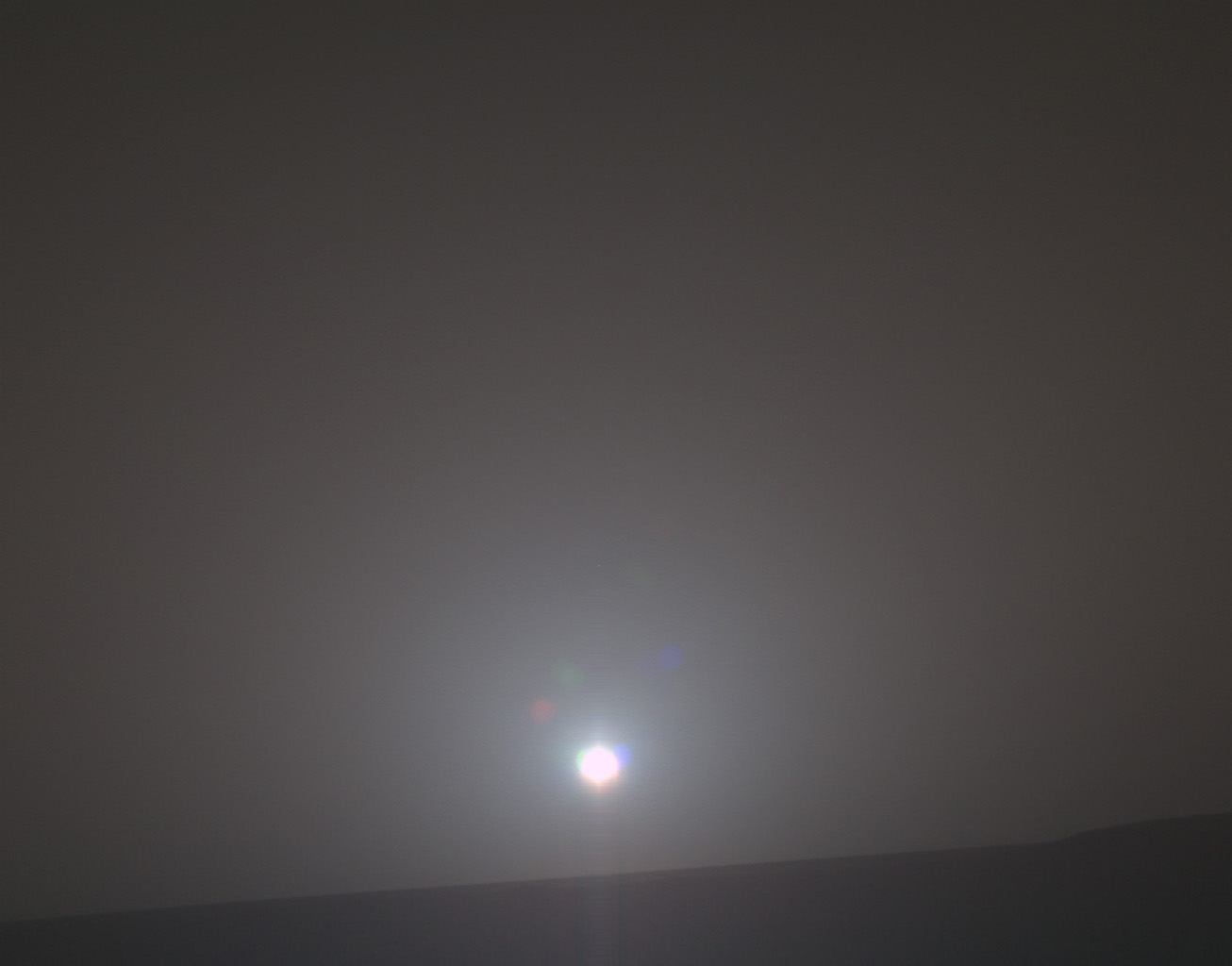What Does Sunrise on Mars Sound Like? Listen Here.
Thanks to our robotic emissaries, we humans know what a sunrise& on Mars looks like without ever having set foot on the Red Planet ourselves — but what does it sound like?
That's the question that struck a pair of sound scientists when they saw the photo snapped by NASA's Opportunity rover of its 4,999th sunrise on Mars. The result is an eerie 2-minute composition the pair is presenting this week at the SC18 supercomputing conference in Dallas.
But even the scientists behind the project were pleased by how appealing and coherent a sound scape the photograph's data created. "It was almost alive in some sense. It was telling a story in a very natural way," Domenico Vicinanza, a physicist and sound scientist at Anglia Ruskin University in the U.K., told Space.com. "That was surprising." [Mars Dust Storm 2018: What It Means for the Opportunity Rover]
Vicinanza and his colleague Genevieve Williams of the University of Exeter in the U.K. specialize in turning data into sound. Most of their work focuses on the human body, for example turning ultrasound and CT scans into sound — but they didn't want to limit themselves to the medical. "We're also passionate about space," Vicinanza said. "Of course, we thought using music to describe certain characteristics of space exploration was fascinating and also, in some ways, natural."

The composition they created combines two different types of data from Opportunity's sunrise image. The melody of the composition comes from the visual data itself — the brightness of the sun and the amount of blue, in particular — panning from left to right in narrow strips across the image.
The low-frequency undertones, which are easiest to hear on a high-quality stereo system, are interpretations of the terrain at Opportunity's location when the photograph was taken, along the western edge of the Endeavour Crater. "We looked at all the bumps and all the terrain characteristics, and we mapped that to sound waves," Vicinanza said. "It's basically like jumping on top of Opportunity and taking a tour of the region."
The ability of a sound scape to combine those two types of inputs is, for Vicinanza, one of the most appealing aspects of turning data to sound. "There is no way of doing something like that with vision," he said. "Sound is an underutilized way of experiencing data." The process also makes that information accessible to people who have visual impairments.
Get the Space.com Newsletter
Breaking space news, the latest updates on rocket launches, skywatching events and more!
Vicinanza said he also hopes the sonification will encourage people to think about sunrises — terrestrial and Martian alike — from a fresh perspective. "Sunrise is something so familiar. It is something we experience every day," Vicinanza said. "We kind of get used to it."
And, of course, there's now a more melancholy aspect to the sunrise image; scientists haven't received such a postcard from Opportunity since the rover went silent in June, when a global dust storm blocked the solar panels that power the robotic explorer.
When the dust began to settle in the middle of September, Opportunity's engineers began pinging the rover in hopes of getting it working again, but those efforts have been in vain so far. Scientists hope that a seasonal wind phenomenon called dust devils, which is due to last from November to January, may clear off Opportunity's solar panels and help the team re-establish contact.
It's no sound scape, but an answering beep from that rover would be the sweetest tone of all.
Email Meghan Bartels at mbartels@space.com or follow her @meghanbartels. Follow us @Spacedotcom and Facebook. Original article on Space.com.
Join our Space Forums to keep talking space on the latest missions, night sky and more! And if you have a news tip, correction or comment, let us know at: community@space.com.

Meghan is a senior writer at Space.com and has more than five years' experience as a science journalist based in New York City. She joined Space.com in July 2018, with previous writing published in outlets including Newsweek and Audubon. Meghan earned an MA in science journalism from New York University and a BA in classics from Georgetown University, and in her free time she enjoys reading and visiting museums. Follow her on Twitter at @meghanbartels.
